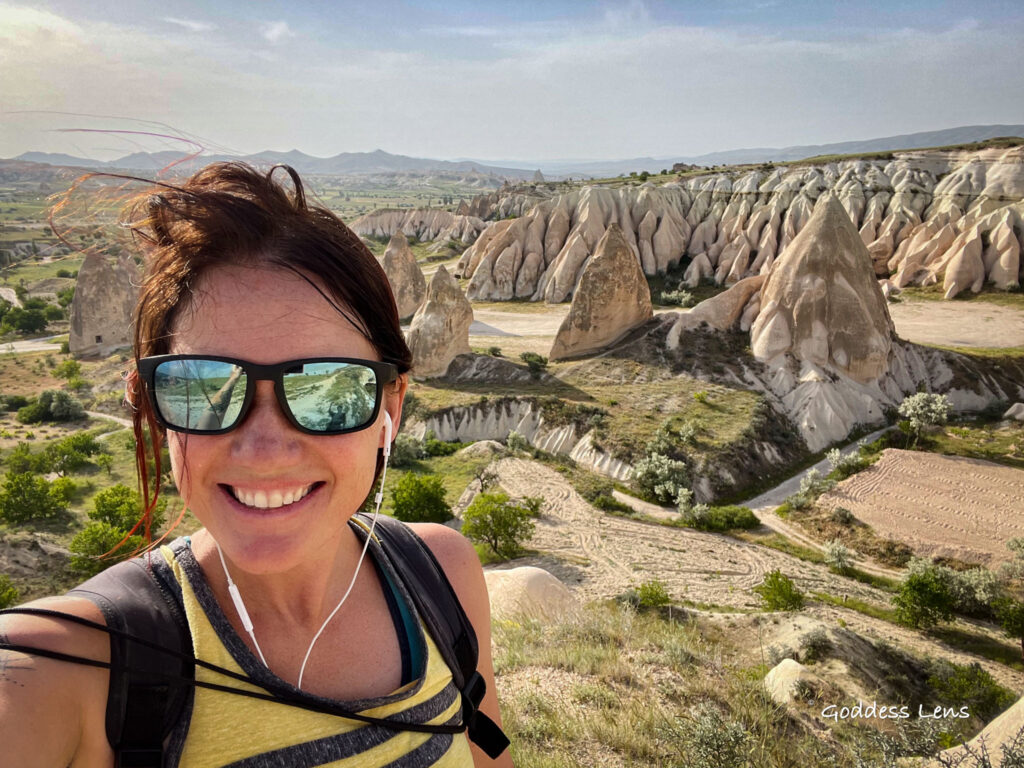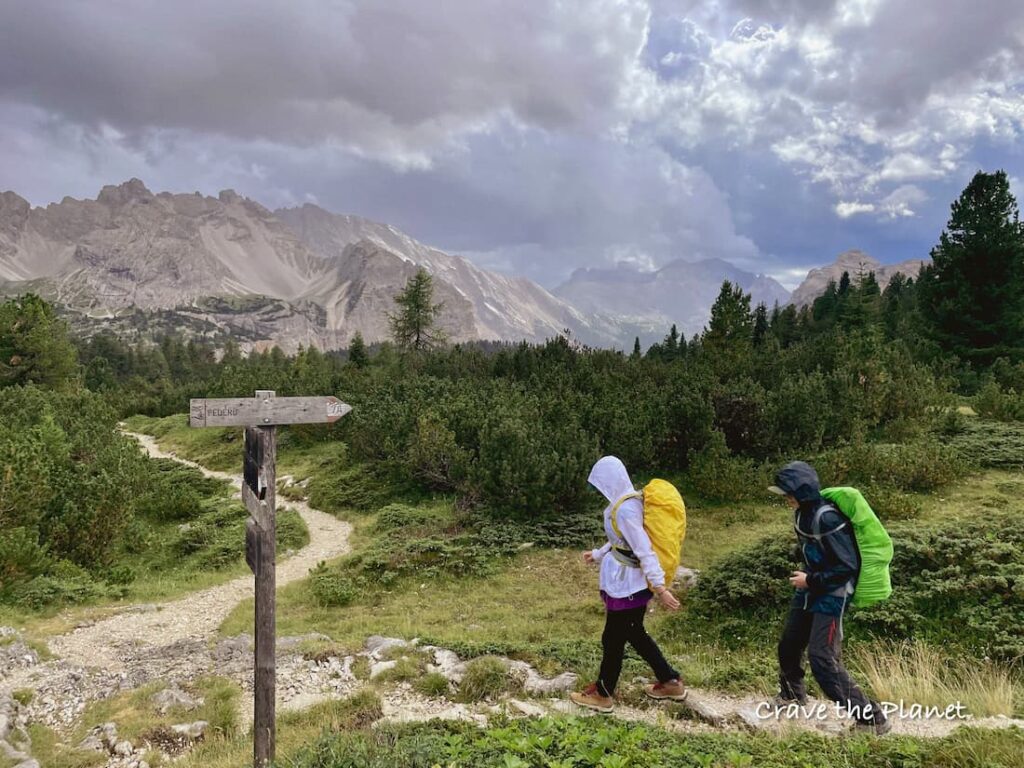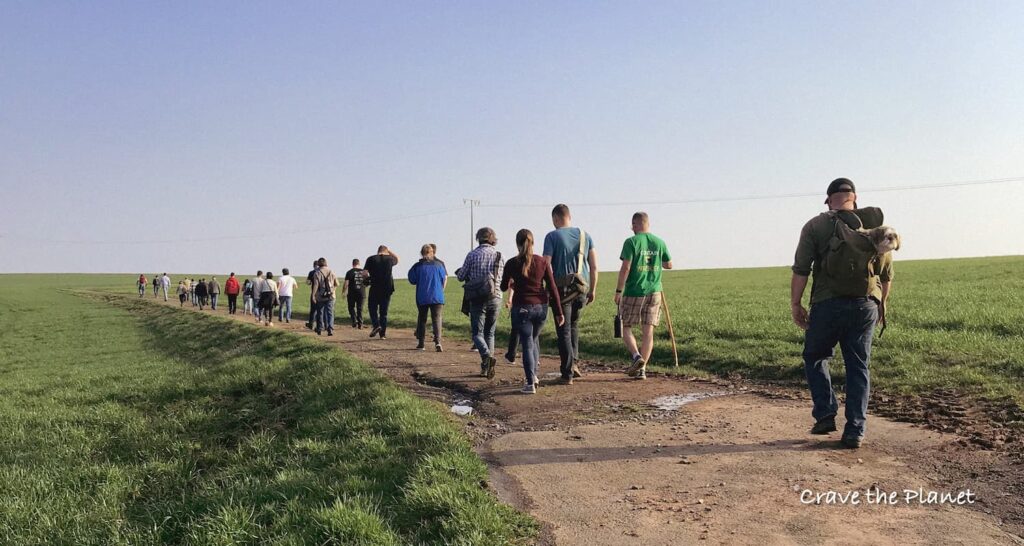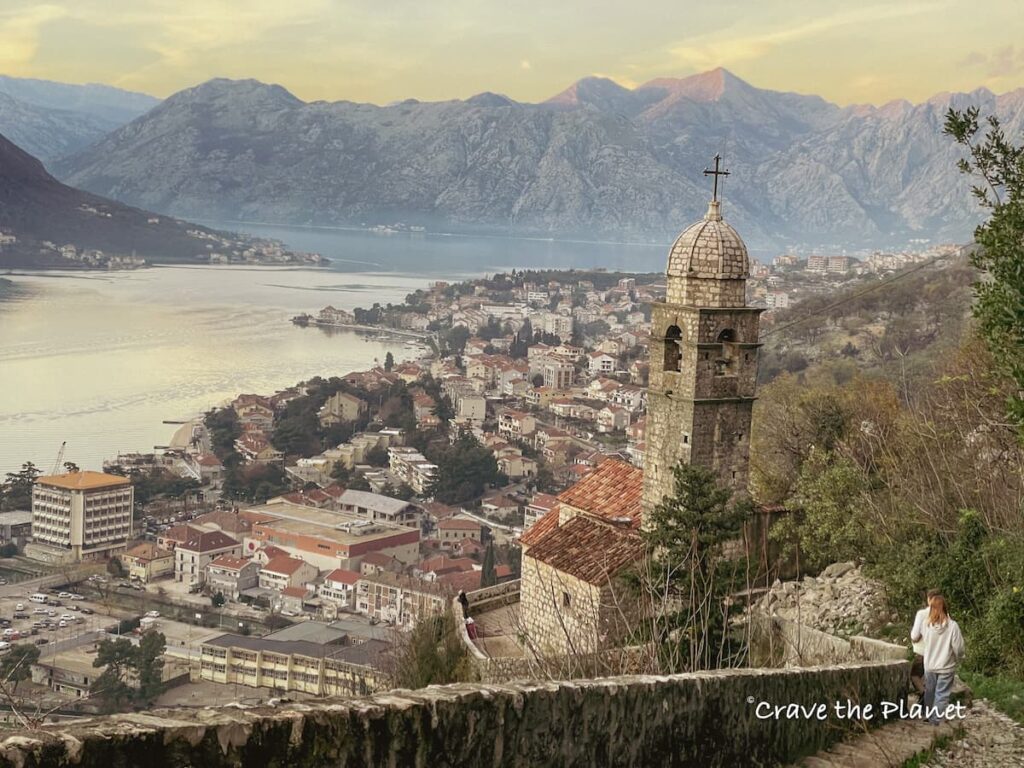
I love hiking and as a physical therapist I believe it can be for everyone. Here’s some of my top tips to help new hikers.

What You Will Learn
Hiking Resources for New Hikers
As a physical therapist has been hiking all my life, I know firsthand the joy and benefits of hitting the trail both for body and mind.
That’s why I’ve compiled a list of hiking resources to help beginners and experienced hikers alike find the best advice, tips, and trails for their next outdoor adventure.
From finding the right gear to learning how to use summer mountain gondolas, to discovering new hiking blogs, these resources have got you covered.
My bottom line: Hiking is a wonderful activity that allows you to connect with nature, get exercise, and clear your mind.
Whether you’re a seasoned hiker or just starting out, it’s important to have the right skills, equipment, and knowledge to stay safe and comfortable on the trail. With the right preparation, hiking can be a truly enjoyable and rewarding experience for people of all ages and abilities.
🥾😓 Feeling Overwhelmed Planning a Hike? Use my custom-built online Hiking Time Calculator for Non-techie People.
What is Hiking?

Hiking is a popular outdoor activity that involves walking on trails or off-trail areas in natural settings such as forests, mountains, and deserts.
Hiking can range from short walks on easy trails to more challenging treks that require advanced skills and equipment.
The activity can be enjoyed alone, with a group of friends or family, or as part of an organized hiking tour. Regardless of the type of hiking experience you choose, it is important to be prepared with proper gear and knowledge of the trail.
Benefits of Soft Hiking
| Human Benefit | How it Helps… |
|---|---|
| Health | ⏫ Strength, Endurance ⬇️ Blood psi |
| Mental & Emotional | Reduce Stress, Increase Mood |
| Tech Detox | Digital Detox Opportunity |
Hiking and backpacking offers a wide range of benefits that make it a great activity to pursue. Here are some of the benefits of hiking:
- Health Benefits: Hiking is a great way to stay physically fit and healthy. It helps to build strength and endurance, and can be an effective form of cardio exercise. Additionally, hiking can help to lower blood pressure, reduce the risk of heart disease, and improve overall cardiovascular health.
- Mental and Emotional Benefits: Hiking can also provide a range of mental and emotional benefits. Being out in nature and getting some fresh air and sunlight can help to reduce stress, improve mood, and boost overall mental wellbeing.
- Tech Detox: Hiking can also be a great way to disconnect from technology and the stresses of daily life, providing an opportunity for introspection and mindfulness.
Social Benefits

Hiking is not only a great way to connect with nature, but it also has significant social benefits. According to a study published in the American Journal of Lifestyle Medicine, group hiking can improve group cohesion and social connectedness.
Here are some of the social benefits of hiking:
- Provides an opportunity for social interaction and bonding with friends and family.
- Can create a sense of community among hikers on the trail.
- Often hikers give each other trail names, a call-sign of affection.
- Encourages teamwork, communication, and cooperation among group members.
So, not only is hiking good for your physical and mental health, but it can also enhance your social life and relationships.
Throughout history women have gained equality through marching and walking. Read Windswept, a historical book at why women walk to learn more.
Essential Hiking Gear and Supplies
When it comes to hiking, having the right GEAR is essential to ensure a safe and enjoyable trip. The most important piece of gear is the BACKPACK, which should be comfortable and able to carry all of your supplies.
Navigation TOOLS such as a map and compass can help ensure that you don’t get lost on your hike, especially if you’re exploring unfamiliar terrain.
When selecting CLOTHING for a hike, it’s important to consider the weather conditions and opt for moisture-wicking fabrics that will keep you dry and comfortable. Don’t forget to layer up or down as needed to regulate your body temperature.
No matter the length of your hike, bringing plenty of FOOD and WATER is a must to keep you energized and hydrated. A general rule of thumb is to bring at least one liter of water per hour of hiking.
FOOTWEAR is another critical piece of gear for hikers, and choosing the right shoes or boots can make all the difference. Look for options with good traction, sturdy support, and a comfortable fit to prevent blisters and other foot injuries.
It’s also important to pack a comprehensive FIRST-AID KIT that includes essentials like blister kits for hiking, bandages, gauze, antiseptic wipes, and pain relievers.
SOCKS are often underrated and forgotten piece of gear that really make a difference. You can use neoprene socks for hiking in extreme cold and wet weather or a softer waterproof hiking sock if you just want to stay dry. I wrote an entire review of socks that help with blister prevention.
Finally, a MULTI-TOOL can come in handy for a variety of tasks on the trail, from cutting branches to repairing gear. Be sure to pack one with a variety of tools like pliers, scissors, and a knife.
Hiking Tips and Skills
Hiking can be a fun and rewarding experience, but it’s important to be prepared and informed before hitting the trail. Here are some tips and skills to help make your hike more enjoyable and safe:
Importance of Proper Planning: Always plan ahead by checking the weather forecast, trail conditions, and park regulations. Make sure you have the necessary permits and have informed someone of your hiking plans and expected return time.
Tips for Hiking with Kids: Bring plenty of snacks and water, choose kid-friendly trails, and make sure to take plenty of breaks. Keep children entertained by playing games or pointing out interesting sights along the trail.
Tips for Hiking with Dogs: Keep your dog on a leash and bring plenty of water and snacks for them. Be mindful of their paws on rough terrain and check for ticks after the hike.
Tips for Hiking in Extreme Weather: Dress appropriately for the weather, bring extra layers, and be aware of potential hazards such as lightning or flash flooding. Avoid hiking in extreme conditions if possible.
Hiking Skills for Beginners: Start with easy trails and gradually build up to more challenging hikes. Learn basic navigation skills such as reading a map and using a compass. Practice Leave No Trace principles to minimize your impact on the environment.
How to Prevent Blisters: Utilize anti-blister socks, take frequent breaks, break in your shoes and carry a blister kit for when they do erupt.
Hiking Tips for Seniors: Choose trails with moderate grades and consider using hiking poles for extra stability. Take breaks as needed and bring plenty of water and snacks.
Advice for Solo Hikers: Inform someone of your hiking plans and expected return time. Bring a map, compass, and other necessary gear. Be aware of your surroundings and trust your instincts.
Hiking Safety Tips: Always stay on marked trails, be aware of wildlife and potential hazards, and follow Leave No Trace principles. Carry a first-aid kit and know basic first-aid skills. In case of emergency, know how to call for help and be prepared to wait for rescue.
The Art of Trail Finding
Let me tell you, finding a good hiking trail can be a real challenge. I’ve spent countless hours scouring the internet for the perfect hike, only to be disappointed by a poorly marked trail or a lackluster view. After years of playing around with various apps and a multitude of websites, I have learned a thing or two about the art of trail finding.
Ask a Local
One of the best ways to find hidden gems and lesser-known hiking trails is by asking locals. Whether you’re hiking in a new town or a new country, the people who live there will often have the best insider knowledge of the area.
You can often use chairlifts or gondolas to get to the best spots without all the pain.
For example in Germany hiking is often assisted by summer chairlifts:
🚠 SUMMER CHAIRLIFTS
1️⃣ On the Upper Middle Romantic Rhine hiking trails:
the slow and easy Boppard Chairlift and Rudesheim chairlift offer stunning views of the Rhine River.
2️⃣ Getting up the Steep Moselle River Valley:
the Cute Cochem chairlift takes you over vineyards and slate blue craggy mini-mountains.
Just like an e-bike, a bit of technology can make exploring nature more accessible to everyone.
People Love to Help – (And Show Off Their Hometown)

When I was traveling through Montenegro last year, I stumbled upon some breathtaking trails simply by asking locals where their favorite hiking spots were.
Not only did I find some amazing hikes and interesting historical points, but I also got some insight on the history of the Balkan war. The hikers showing me the secret passages were happy to share their knowledge and passion for the outdoors and their new homeland.
So next time you’re in a new place, don’t be afraid to strike up a conversation with the locals and ask for their hiking recommendations. You never know what hidden treasures you might discover!
Tourism Offices – Sustainable Travel Offers
Sustainable and responsible travel has become increasingly popular among hikers and outdoor enthusiasts, and many local tourism boards are now focusing on promoting sustainable hiking trails.
By visiting the local tourism office, you can get valuable information about eco-friendly and sustainable hiking options in the area.
Not only will they provide you with information about hiking trails, but they can also suggest nearby restaurants that offer locally sourced food and recommend points of interest that align with sustainable and responsible travel practices.
GOING on the AT, PCT or other long distance hiking trail?
Get the ➡️ Far Out Guide App to never lose your way.
Support Rural Tourism
In addition to promoting sustainable tourism, local tourism offices also play a crucial role in supporting the local economy.
By hiking in areas recommended by the tourism office, you can support the local businesses that rely on tourism for their livelihood.
This helps to create a sustainable cycle of economic growth and development, ensuring that the natural beauty of the area is preserved for future generations of hikers to enjoy.
Online Resources for Finding Hiking Trails
First things first, don’t underestimate the power of the internet. There are a ton of great websites and apps out there that can help you find hiking trails in your area or wherever your travels may take you.
Some of my favorites include AllTrails, Komoot, Women Over 40 who Hike and Backpack. These sites offer user-generated reviews and ratings, as well as detailed trail maps and practical information like water stops and restaurants.
Navigation Apps
Some of my favorite hiking navigation apps include:
- AllTrails
- Komoot
- My full guide on “how to use komoot”
- And google maps!
Hiking Blogs
Some of my favorite hiking blogs include:
Facebook Groups
Some of my favorite facebook groups for hikers include:
- Women Over 40 Who Hike and Backpack
- Dolomites AV1
- Untold Outdoor Europe Travel Planning
- All Women All Trails
How to Get into Hiking
As a physical therapist with over 15 years of experience, I’ve seen countless patients benefit from incorporating hiking into their fitness routine.
While this is not medical advice (always consult with a doctor if you have concerns), I believe that hiking can be a safe and effective form of exercise for many people.
With proper preparation and the right mindset, anyone can enjoy the physical, mental, and social benefits of hiking as a hobby or as a way to get into outdoor photography.
If you are new to hiking, getting started may seem overwhelming. However, with the right mindset and approach, it can be an enjoyable and rewarding activity. Here are some tips to help you get started:
A. Starting Slowly: Start with short, easy hikes and gradually increase the difficulty and length. This will help you build up your endurance and avoid injuries like sore calves, plantar fasciitis or hiking toe pain. Use helpful gear like trekking poles to make hiking easier.
B. Choosing the Right Trail: Choose a trail that matches your fitness level and hiking experience. Research the trail’s difficulty, length, terrain, and elevation before embarking on it.
C. Joining Hiking Groups: Joining a hiking group can be a great way to meet like-minded people and gain experience. You can find hiking groups through social media or local outdoor retailers.
D. Learning to Hike: While hiking may seem simple, there are some hiking skills that are important to learn. These include map reading, hiking with a weighted vest, using a compass, packing a backpack, and understanding weather conditions. Consider taking a hiking class or workshop to learn these skills.
Remember, hiking is a fun and rewarding activity that can provide a great workout, a chance to connect with nature, and an opportunity to explore new places. Don’t be afraid to get outside and start exploring the world on foot with these hiking resources.
Leave No Trace: Respecting the Environment
Hiking isn’t just a fun activity, it’s also an opportunity to connect with nature and the environment. As hikers, we have a responsibility to leave nature as we found it, if not better. Trail conservancy is vital.
This means following the principles of Leave No Trace, a set of guidelines that promote responsible outdoor ethics.
The Hiking Life
Immerse into your senses with:
📚 Top hiking books & movies
🎧 Inspiring hiking podcasts
Video ➡️ Best waterfalls in Europe
and the best Nature quotes, Mountain Quotes & Dolomites Quotes to inspire wonder.
One of the key principles of Leave No Trace is to pack out what you pack in. It may seem like common sense, but it’s surprising how many hikers forget to take their trash with them. Experienced hikers will tell you that nothing is more aggravating than coming across a littered trail especially in a state park, national parks or the Appalachian trail.
Make sure you bring a trash bag with you and dispose of it properly when you get back to civilization. Remember, we want to preserve nature for generations to come, and this starts with our actions on the trail.
Other principles of Leave No Trace include respecting wildlife, staying on designated trails, and leaving natural and cultural resources undisturbed. By following these guidelines, we can minimize our impact on the environment and preserve the beauty of nature for future generations.
Conclusion – Explore the World by Foot
Day hiking is a wonderful way to get exercise, reduce stress, and connect with nature. As a hiking enthusiast, I encourage everyone to get outside and explore the world on foot.
There’s no better feeling than the sense of accomplishment and awe that comes from reaching the summit of a mountain or discovering a hidden waterfall on a hiking trail.
Getting started with hiking can seem intimidating, but it’s worth taking the leap with these hiking resources. Start small, with shorter hikes on easy terrain and work your way up to longer and more challenging trails.
Remember to bring plenty of water, snacks, and appropriate gear, and always let someone know where you’re going and when you expect to return.
Hiking is not only good for our physical health, but it’s also a great way to practice sustainable travel. By exploring local hiking trails, we can support and appreciate the natural beauty of our communities while minimizing our carbon footprint.
So, lace up your hiking boots, pack a backpack, and hit the trails. The world is waiting to be explored on foot, and I guarantee you won’t regret the adventure.
➡️ Curious about more hiking related resources for beginners? Check out my post about how to estimate the time you need to hike different distances by fitness levels.
Thanks for reading my article on essential hiking resources. Until next time, adventures await!

Author profile: Morgan Fielder is a Doctor of Physical Therapy and passionate hiker who believes in exploring the world on foot with good food. Follow her journey as she shares science-based hiking tips and advocates for sustainable tourism.
